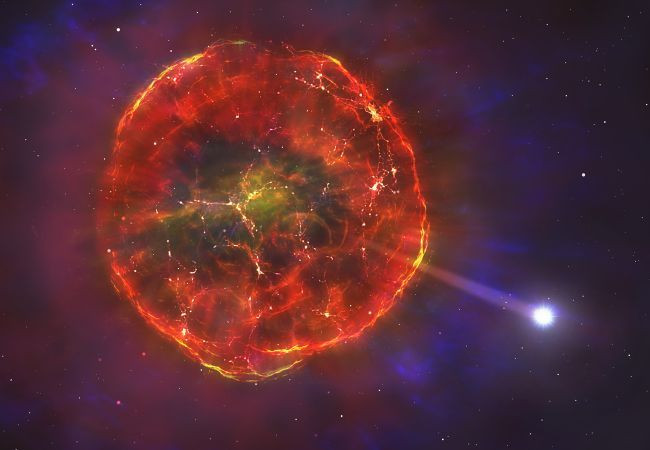Scientists Spot Partial Supernova Blasting White Dwarf Star Across Milky Way
KEY POINTS
- Scientists discovered a white dwarf moving across Milky Way
- The white dwarf is the core remnant of a dead star
- Scientists believe a partial supernova propelled the white dwarf
A team of scientists discovered the core remnant of a dead star streaking across the Milky Way galaxy. They believe that the cosmic object was propelled by a stellar explosion or a partial supernova.
In a new study, the scientists focused on a white dwarf known as SDSS J1240+6710, which is located about 1,400 light-years from Earth. Their findings were presented in a new paper published in the journal Monthly Notices of the Royal Astronomical Society.
A white dwarf is the core of a star that reached the end of its life cycle after running out of energy. During this stage, it sheds off its outer layers until its core is exposed.
Using NASA and the European Space Agency’s Hubble Space Telescope, a group of scientists was able to study SDSS J1240+6710. Through their observations, they learned that the white dwarf is traveling about 560,000 miles per hour in the opposite direction of Milky Way’s rotation.
“When we found this unusual white dwarf was really low in mass and really moving fast, that really triggered my curiosity into what happened to it in its past,” Boris Gänsicke of the University of Warwick in England and lead author of the study told Space.com.
According to the scientists, the white dwarf’s strange behavior may have been caused by a partial supernova. As the original star started to shed off its outer layers during its death, it triggered a thermonuclear explosion or a supernova. However, the scientists believe that a full explosion did not occur.
Instead of destroying the white dwarf, the partial supernova propelled the core remnant across the galaxy. The scientists noted that the explosion that sent the white dwarf flying across Milky Way could be a new type of supernova that hasn’t been studied before.
“It has a chemical composition which is the fingerprint of nuclear burning, a low mass and a very high velocity; all of these facts imply that it must have come from some kind of close binary system and it must have undergone thermonuclear ignition,” Gänsicke told the BBC. “It would have been a type of supernova, but of a kind that we haven't seen before.”

© Copyright IBTimes 2024. All rights reserved.





















